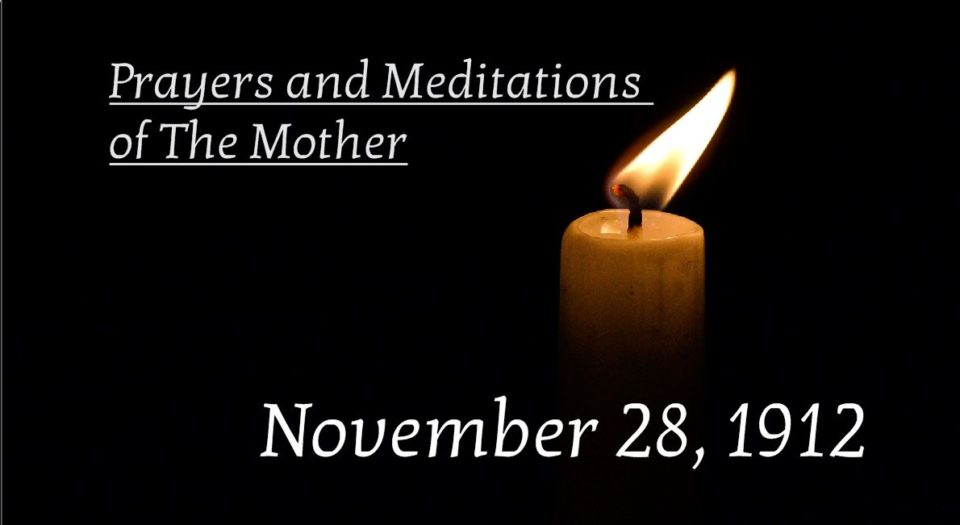A Recitation of selected Prayers and Meditations of The Mother (AUDIO)

November 28, 1912
THE outer life, the activity of each day and each instant, is it not the indispensable complement of our hours of meditation and contemplation? And is not the proportion of time given to each the exact image of the proportion which exists between the amount of effort to be made for the preparation and realisation? For meditation, contemplation, Union is the result obtained — the flower that blooms; the daily activity is the anvil on which all the elements must pass and repass in order to be purified, refined, made supple and ripe for the illumination which contemplation gives to them. All these elements must be thus passed one after the other through the crucible before outer activity becomes needless for the integral development. Then is this activity turned into the means to manifest Thee so as to awaken the other centres of consciousness to the same dual work of the forge and the illumination. Therefore are pride and satisfaction with oneself the worst of all obstacles. Very modestly we must take advantage of all the minute opportunities offered to knead and purify some of the innumerable elements, to make them supple, to make them impersonal, to teach them forgetfulness of self and abnegation and devotion and kindness and gentleness; and when all these modes of being have become habitual to them, then are they ready to participate in the Contemplation, and to identify themselves with Thee in the supreme Concentration. That is why it seems to me that the work must be long and slow even for the best and that striking conversions cannot be integral. They change the orientation of the being, they put it definitively on the straight path; but truly to attain the goal none can escape the need of innumerable experiences of every kind and every instant.
… O Supreme Master who shinest in my being and each thing, let Thy Light be manifest and the reign of Thy Peace come for all.


About Savitri | B1C3-06 The Divine Successor of Man (pp.27-28)